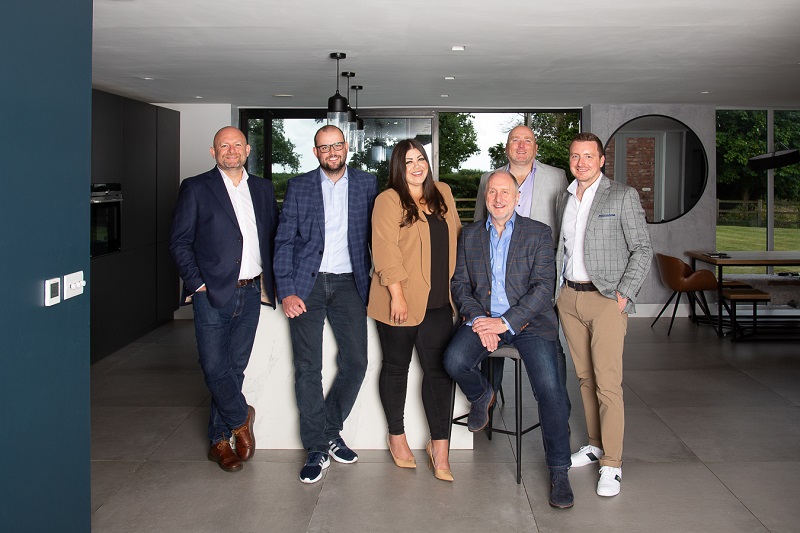When returning to work after the Christmas period, the holiday season can immediately begin to feel like a distant memory. We often enter the New Year feeling rejuvenated from our period of rest and ready to face the challenges of work. However, this motivation can quickly wear off as the weeks go on. The economic and political climate and the additional pressures that many are likely to be under are likely to impact morale and engagement when returning to the office.
Employers can help boost resilience in their teams by creating a workplace culture that encourages healthy habits. A happy workplace will encourage efficiency and productivity as employees face the challenges of returning to work.
Here are six ways to create a happy and productive workplace to support employees returning in 2023:
1. Encourage and respect clear boundaries
When hybrid or remote working, the blurring of the personal and professional spaces can quickly lead to some long working hours or being unable to switch off without the physical separation. Without boundaries, we use valuable energy from our reserves. This can lead to conditions such as burnout, especially if this continues for a prolonged period.
‘’The happiest and most productive employees are those that feel they can be authentically themselves, which will include feeling able to identify and protect appropriate separation between work and other aspects of life,’’ says Lesley Cooper, wellbeing consultant and CEO of WorkingWell.
‘’Healthy boundaries will look different for every person. The central thing underpinning this exercise will be respecting others’ choices and protecting your own. No one should be made to feel guilty for taking much-needed breaks or holidays. These are investments in the next performance wave and ensure we come to work with full energy tanks,’’ she says.
Toxic work cultures that do not respect individuals are major contributors to employee dissatisfaction and poor wellbeing. When leaders clearly advocate for their own boundaries and others, the workplace culture is built upon respect and support, the foundations for workplace happiness.
2. Reframe our understanding of purpose and work
When we do not feel that there is meaning in our work, we can become jaded and disengaged, preventing us from being happy. Misunderstandings about our purpose in work can lead us to lean towards extrinsic motivators, such as pay rises and bonuses, which do not fulfil us.
Sharath Jeevan, the intrinsic leadership and motivation expert and author of Intrinsic, believes that reframing the purpose of work could be the key to creating a culture of meaning in our organisations. He argues that ‘’we’ve fundamentally misunderstood the purpose of work in our lives and societies, and see work entirely from the lens of providing income,’’ states Sharath.
He continues: ‘‘The link between our individual Purpose and the Purpose of the organisations we work for and represent is crucial. It can’t be just the tenuous connection that it’s often been in the past, propped up by factors like the fancy office or the coffee machine.’’
He advises that leaders need to create a culture at work in which employees ‘’simply but deeply understand and articulate how their work contributes to the overall Purpose of the organisation they are in – and, in turn, how the organisation’s Purpose contributes to helping and serving others.’’
3. Find joy outside work too
When work becomes all-consuming, we can miss out on all the joys in our personal lives, and vice-versa. To be our best selves at work, we need to top up our energy reserves from other areas of life too.
In toxic working cultures where employees feel they have to be tuned into work all weekend, their capacity to spend time doing things which fulfil them is compromised. Ultimately, they will not then be their happiest selves at work.
Gillian McMichael, the founder of Full Circle Global, argues that ‘‘regardless of how busy we are, we should find time to connect with what brings us joy. To experience joy and find an interest outside our core responsibilities is available to us all.’’
For Gillian, while feelings of happiness are often temporary, true joy is constant. “Joy is a limitless transformative reservoir waiting to be tapped into. It requires us to surrender, allow it to wash over us and be present,” she says.
Leaders should encourage teams to explore their personal passions and take an interest in what brings them joy outside of work. When their whole self is celebrated, individuals are more likely to be happier at work.
4. Champion work as a place people can be themselves
Most leaders understand the importance of diversity and inclusion (D&I) to their organisations for recruitment, retention, and engagement. Leaders must, however, push beyond the standard D&I frameworks. Inclusion is crucial to ensuring everyone is happy at work.
Representation should matter to every leader to broaden talent pools and make employees feel safe, respected and thrive while working for you. Ultimately, diverse companies are better for all stakeholders, from employees to customers and the bottom line.
Julio Bruno, experienced founder, CEO and author of Passion to Lead, explains that leaders have a responsibility with regards to D&I, both internally and externally, and to help people feel like work is a place they feel welcomed and have a sense of belonging.
‘‘Leaders lead, and that means leading in social causes as well”, he says. “As a leader in your company, think about your responsibility for policy-making and how you set the tone of the company. Besides doing this internally, I recommend you also do this externally. You have a voice: speak up.’’
5. Build workplace cultures on crowdsourcing
The happiest workplace cultures are those that are built on sharing resources. When knowledge is hoarded to get ahead, teams will not be able to function optimally, but a competitive workplace culture will prevail. This can be damaging to an individual’s wellbeing. Similarly, teams can be reluctant to ask for help without clear signposting on where to access information.
Kesh Dhillon, Sales and Marketing Director at Biomni, advocates for a cross-departmental approach. “When teams can see how their work impacts other departments, they are much more likely to share knowledge,” he says. Low code, multi-platform solutions like Tenjin can facilitate cross-department knowledge sharing on a global scale.
“Build upon this collaborative culture by advocating for knowledge crowdsourcing. Work together to create a centralised, business-focused knowledge system and incentivise teams to keep it current.”
Kesh argues that through knowledge crowdsourcing, you demonstrate your commitment to sharing resources and creating a helpful culture. When people know exactly where to go to source vital information, they will be far happier and more productive.
6. Build team relationships with a shared vision
Good relationships and an enjoyable working atmosphere with colleagues are key factors in individual happiness at work. This is particularly true for small businesses and startups, as there are usually fewer people but big ambitions to create impact and grow.
One way team happiness can be achieved is by ensuring employees share the passion and vision of the business. Ensuring staff are aligned with the end goal will help forge strong relationships, even during stressful times.
“Making sure that your team shares your passion and vision is key to creating an enduring alliance.” Says Josephine Liang, co-founder and CEO of award-winning, tech-enabled reusable food and drink packaging scheme, CauliBox.
“Passion needs to be at the root of your business. If your team doesn’t truly love and believe in what you’re doing, then some of the essential yet grinding aspects of work will quickly grow tiresome. With a startup, the business requires a lot of labour, and some of it can be very unglamorous because you have to do everything with not as many resources.
“This is particularly true in impact-driven startups, which have to balance business, innovation, and impact. In the hardest moments, your employees must remember what is driving them and believe that you can achieve your goals by all working together.”









